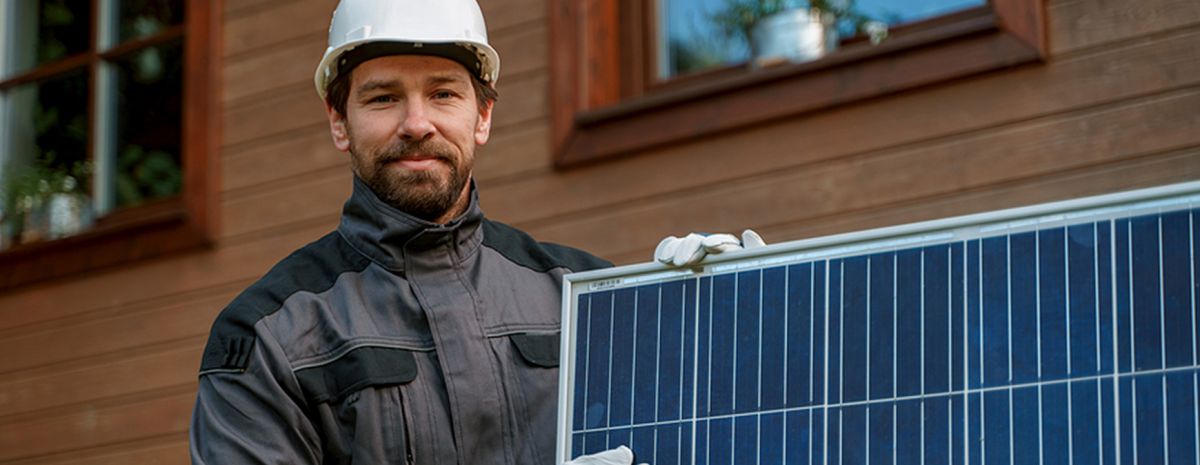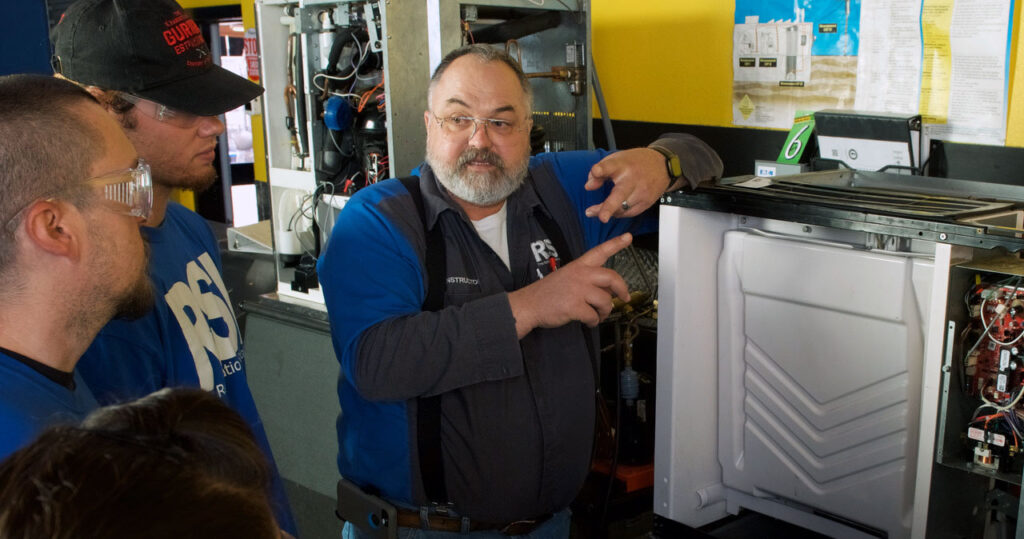RSI is a Great Training Option for Everyone
Learn more about how we can prepare you to advance your career.
Ready to get solar panels to save money on your electricity? If so, there are critical elements to consider. These include the number of solar panels, the cost, and the payback period. So, are you asking yourself, “How many solar panels are required to power a house?”
How Many Solar Panels Are Required to Power a House?
An average-sized home with about 2,500 square feet will need approximately 15 to 22 full-sized solar panels to replace traditional electricity. Many factors determine how many solar panels you will need. The number of solar panels depends on how much sun your home gets, how much power you will use, the output of the solar panels, and the size of your roof.
Home’s Electricity Usage
Electricity is measured in kilowatt-hours (kWh), and your electric bill will tell you how much electricity you use each billing cycle. If you have an energy-efficient home, you will need fewer solar panels.
Solar Panel Size
Get Started on the Path to a New Career
Fill out our form to learn how we can help you change your life.
The standard solar panel size is 65 by 39 inches. If you have a lot of space on your roof, you can opt for more extensive, less efficient solar panels.
Solar Panel Wattage
Solar panels generate between 250 and 400 kilowatt hours of power. Consider the output of the solar panels you are purchasing before installation.
Sunlight
How many hours of sunlight your roof gets will determine the amount of energy your solar panels can produce. And you will need more solar panels in areas that don’t get consistent sunlight.
How Do I Measure Square Footage?
Most houses are listed on Zillow and show the home’s square footage, but to measure the width and length of the house, you will take the measurements outside and multiply the width by the length.
Zillow offers a step-by-step guide on measuring a house’s square footage.
Step 1: Sketch a floor plan of the home’s interior.
Step 2: Break down the house into measurable rectangles.
Step 3: Measure the length and width of each rectangle.
Step 4: Multiply the rectangle’s length by the width to get the square feet.
Step 5: Add up the total of all rectangles for the house’s total square footage.
How Much Does Electricity Cost in Phoenix?
The average residential electricity rate in Phoenix is 16 cents per kilowatt-hour. Solar panels can help a homeowner save money by reducing the monthly electric bill. If the electric bill is $150 a month, that is $1,800 a year. Over the life of solar panels, you could save up to $67,000 in electricity alone.
How Much Do Solar Panels Cost in Phoenix?
The average solar panel cost for a 5-kilowatt system is $10,000 to $14,000. The average solar payback period in Phoenix is over seven years when a solar investment starts to earn money. The 20-year savings is $39,243.
What Determines the Cost of Solar Panels?
There are a few things that determine the cost of your solar panels. The two significant factors are the size of the system and the brand. The bigger the size, the higher the price.
- System Size
- Panel Brand
- Panel Type
- Cost of Installation
- Permitting and Interconnection
- Maintenance Costs
After buying solar panels, you must pay for a government inspection that costs around $150. Then, you will need to clean the solar panels, which will cost between $140 and $180 annually.
Final Thoughts
Did learning about solar panels interest you? If so, consider a career as an electrician. One of the critical topics you will cover in an Electro-Mechanical Technologies program is the fundamentals of solar. With this diploma, you can become an electrician, solar panel installer, or one of the many trade jobs that graduates from an Electro-Mechanical Technologies program transition into. And The Refrigeration School can help
Want To Learn More
This 9-month Electro-Mechanical Technologies Training program provides training based on a broad range of knowledge in electrical and mechanical technologies, along with heating, ventilation, air conditioning, and refrigeration.
Courses focus on the fundamentals of electricity, residential and commercial wiring, and comfort systems. An added value to the electro-mechanical technician training is the solar energy technology module, which features an overview of the Photovoltaic (PV) Science with principles and application processes used in many solar-powered systems. To learn more, contact us.
Additional Sources
This blog has been labeled as archived as it may no longer contain the most up-to-date data. For a list of all current blog posts, please visit our blog homepage at https://www.rsi.edu/blog/




